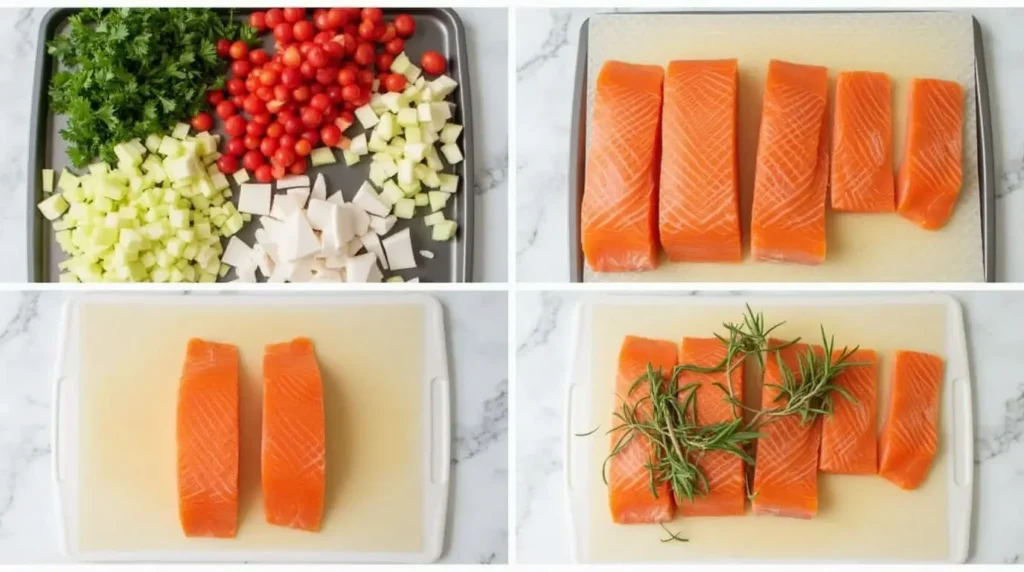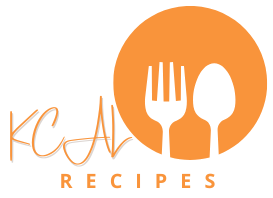Salmon soup is more than just a meal—it’s an experience. This article dives deep into the world of salmon soup, uncovering its cultural roots, rich flavors, and numerous health benefits. From understanding the core ingredients to mastering the perfect cooking technique, we’ll guide you step-by-step. You’ll also discover how to tweak the recipe to suit your preferences, explore variations, and learn why this dish deserves a place on your table. Let’s begin!
Table of contents
What is Salmon Soup?
Salmon soup is a comforting, flavorful dish loved worldwide. It typically features tender salmon pieces in a broth enriched with vegetables, herbs, and spices. Whether creamy or light, its appeal lies in the perfect balance of flavors and textures. A bowl of salmon soup can warm you up on a cold day or serve as a nutritious, light meal anytime.
Cultural Significance and History
This versatile dish has roots in several cuisines. Scandinavian countries, for instance, cherish their creamy salmon chowders, while Mediterranean versions lean on brothy bases enhanced with citrus and dill. Asian-inspired salmon soups bring bold flavors with soy, ginger, and miso. Despite its variations, salmon soup consistently embodies comfort, health, and simplicity across cultures.
Why Salmon Soup is a Must-Try Dish
Why should salmon soup top your list of must-try recipes? For starters, it’s a culinary powerhouse. Packed with omega-3 fatty acids, vitamins, and minerals, salmon is as healthy as it is delicious. The soup’s versatility lets you adapt it to your taste preferences or dietary needs—whether you prefer a creamy chowder, a vibrant herb-filled broth, or something in between. Plus, it’s surprisingly quick and easy to prepare, making it a favorite for busy cooks.
Ingredients Breakdown
Essential Ingredients for Salmon Soup
The foundation of a great salmon soup lies in its ingredients. A classic recipe calls for fresh salmon, hearty vegetables, flavorful broth, and a touch of herbs and spices. Salmon fillets, whether wild-caught or farmed, provide the rich, tender base, while potatoes and carrots add a satisfying texture. For the broth, chicken or fish stock works best, and fresh dill or parsley gives the dish a burst of herbal freshness.
Choosing the Right Salmon
Selecting the right salmon can elevate your soup to new heights. Wild-caught salmon is often preferred for its firm texture and distinct flavor, but farmed salmon can be a more accessible option. Opt for skinless fillets to avoid the rubbery texture that can occur when cooking with skin-on salmon in soups.
Enhancing Flavors with Spices and Herbs
To achieve a well-rounded flavor, spices and herbs are indispensable. Dill and oregano complement salmon’s natural taste beautifully, while a hint of cumin or coriander adds depth. A squeeze of lemon juice at the end not only brightens the broth but also ties all the flavors together. Don’t forget the salt and pepper—essential for balancing the overall taste.
Step-by-Step Guide to Making Salmon Soup

Preparing the Base: Aromatics and Broth
Start by heating a drizzle of olive oil in a large pot. Add chopped onions, minced garlic, and bell peppers, and sauté until fragrant. This aromatic base, or sofrito, sets the stage for a flavorful salmon soup. Pour in your preferred broth—whether chicken, vegetable, or fish—and bring it to a simmer.
Incorporating Vegetables
Thinly sliced potatoes and carrots are classic additions, offering both texture and nutrition. Add them to the simmering broth and let them cook until tender. This step ensures that every spoonful delivers a hearty bite, enhancing the soup’s comforting appeal.
Perfecting the Salmon Cooking Technique
Gently season your salmon fillets with salt and add them to the pot. Reduce the heat and simmer for 3–5 minutes, ensuring the fish doesn’t overcook. Salmon is ready when it turns opaque and flakes easily with a fork. Overcooking can make the salmon dry, so keep a close watch.
Finishing Touches: Lemon Juice and Dill
Just before serving, stir in a generous squeeze of fresh lemon juice and a handful of chopped dill. These final touches give the soup its signature brightness and herbaceous aroma. Pair with a slice of crusty bread for a complete, satisfying meal.
Variations of Salmon Soup
Mediterranean Style Salmon Soup
For those seeking a light yet flavorful option, a Mediterranean-style salmon soup is the way to go. This version relies on a brothy base enriched with olive oil, garlic, and plenty of fresh herbs like dill and parsley. A splash of lemon juice adds brightness, while thinly sliced vegetables such as zucchini or leeks enhance the soup’s depth. Serve with warm pita bread for a wholesome meal.
Creamy Salmon Chowder
If you’re in the mood for something rich and indulgent, creamy salmon chowder is a comforting choice. By incorporating heavy cream or coconut milk into the broth, you achieve a velvety texture. Add sweet corn, diced potatoes, and a pinch of smoked paprika to create a hearty, satisfying bowl perfect for cold days. This version pairs beautifully with crusty sourdough bread.
Asian-Inspired Salmon Soup
For a bold and zesty twist, an Asian-inspired salmon soup brings flavors like ginger, soy sauce, and miso paste to the forefront. Use bok choy, mushrooms, and scallions to add texture, and finish with a drizzle of sesame oil. This soup is ideal for anyone looking to explore global culinary flavors in their home kitchen.
Suggestion for Related Recipes: For more hearty and globally inspired soups, check out our article on Japanese Udon Soup with Enoki.
Health Benefits of Salmon Soup

Nutritional Value of Salmon
Salmon is a nutritional powerhouse, making salmon soup not only delicious but also incredibly healthy. Packed with omega-3 fatty acids, this fish supports heart health and cognitive function. It’s also rich in high-quality protein, vitamin D, and B vitamins, all essential for maintaining energy levels and overall well-being.
Benefits of Including Vegetables and Broth
The vegetables in salmon soup, like carrots and potatoes, add an extra dose of vitamins and minerals. Carrots are high in beta-carotene, while potatoes provide potassium and fiber. Meanwhile, the broth—whether chicken, vegetable, or fish—keeps you hydrated and soothes the digestive system.
Low-Calorie, High-Flavor Meal Option
For those aiming to manage their weight, salmon soup is a fantastic low-calorie option that doesn’t skimp on flavor. With its balance of lean protein, nutrient-dense vegetables, and flavorful herbs, this dish satisfies hunger while supporting a healthy diet.
Additional Tip: Pair this soup with a side of whole-grain crackers or a green salad for a complete, nutritious meal.
For other hearty and healthy soup options, check out Breakfast Soup: A Warm and Nutritious Start to Your Day.
Common Mistakes to Avoid
Overcooking the Salmon
One of the most common pitfalls when preparing salmon soup is overcooking the salmon. Since salmon cooks quickly, it’s crucial to monitor it closely. Overcooked salmon can become dry and rubbery, losing its delicate texture. To avoid this, add the salmon towards the end of cooking and simmer gently until it flakes easily with a fork.
Neglecting Proper Seasoning
Seasoning is the key to elevating the flavors of your salmon soup. A common mistake is under-seasoning or skipping essential ingredients like dill, lemon juice, or a pinch of cumin. These components bring out the natural flavors of the fish while enhancing the overall taste. Don’t be afraid to taste as you cook and adjust the seasoning accordingly.
Using Poor-Quality Broth
The broth forms the backbone of salmon soup, so using a bland or low-quality broth can result in a lackluster dish. Whether you opt for chicken, fish, or vegetable stock, ensure it’s rich and flavorful. Homemade broth or a high-quality store-bought version will make a noticeable difference in your soup’s depth and taste.
FAQs About Salmon Soup
Can I Use Frozen Salmon?
Yes, frozen salmon works wonderfully for salmon soup. Just ensure it’s thawed completely before cooking for even results. Frozen salmon can be a cost-effective and convenient option without compromising on flavor.
What Are the Best Sides for Salmon Soup?
The right sides can elevate your salmon soup into a complete meal. Crusty bread, such as a baguette or sourdough, is perfect for dipping. Alternatively, a side salad with fresh greens and a light vinaigrette complements the soup’s richness beautifully.
How Long Does Salmon Soup Last in the Fridge?
Salmon soup can be stored in an airtight container in the fridge for up to two days. When reheating, do so gently on the stove to preserve the texture of the salmon. Avoid overcooking during reheating, as it can affect the fish’s quality.
Can I Make a Dairy-Free Version?
Absolutely! A dairy-free salmon soup can be achieved by skipping heavy cream and opting for coconut milk for a creamy texture. Alternatively, keep it light and brothy with a focus on herbs and spices for flavor.
Final Thoughts and Serving Suggestions
Pairing Salmon Soup with Other Dishes
Salmon soup is a versatile dish that pairs well with various sides. For a classic combination, serve it with a slice of warm, crusty bread—perfect for soaking up the flavorful broth. If you prefer something lighter, a mixed greens salad with a tangy vinaigrette can balance the soup’s richness. For a heartier meal, consider pairing it with roasted vegetables or a grain-based side like quinoa or wild rice.
Encouragement to Experiment
The beauty of salmon soup lies in its adaptability. Don’t hesitate to tweak the recipe to suit your taste or dietary preferences. Add your favorite vegetables, experiment with different herbs, or try using alternative broths. The possibilities are endless, and every variation offers a new and exciting flavor experience. With a little creativity, you can turn a simple soup into a signature dish that showcases your personal culinary style.
People Also Ask
What Makes Salmon Soup Healthy?
Salmon soup is packed with nutrients, making it a healthy choice for any meal. The salmon provides omega-3 fatty acids and high-quality protein, while the vegetables add essential vitamins and minerals. Combined with a light broth, it’s a meal that supports heart health, brain function, and overall well-being.
Can Salmon Soup Be Made Ahead?
Yes, salmon soup can be prepared ahead of time. However, for the best texture, add the salmon just before serving. The broth and vegetables can be cooked in advance, making it easy to finish the soup quickly when needed.
Is Salmon Soup Suitable for Kids?
Absolutely! With its mild flavors and soft texture, salmon soup is a kid-friendly option. You can adjust the seasoning to suit younger palates, making it a nutritious meal the whole family will enjoy.
What’s the Best Way to Store Salmon Soup?
Store leftover salmon soup in an airtight container in the refrigerator for up to two days. When reheating, do so over low heat to prevent overcooking the salmon. Avoid freezing, as the texture of the fish can change upon thawing.

